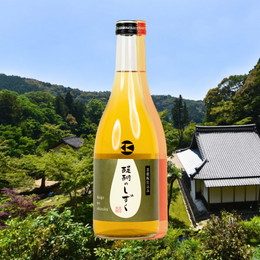
Tamano Hikari (or TamanoHikari) is a historic Sake brewer that goes all the way back to 1673, when Nakaya Rokuzaemon had first gotten a license from the Tokugawa shogunate. The lore goes that the Rokuzaemon's had been devoted to the Hayatama Shrine in Kumano, Kishu, and thus named their Sake after the spirit of the shrine's gods Izanagi-no-Mikoto and Izanami-no-Mikoto. In English, the name can be translated to mean "Brilliant Jade". Today the brewery is led by the 13th generation Rokuzaemon!

Tamano Hikari brewery in Fushimi, Kyoto.

Nevertheless, after the war, the brewery would shift to Fushimi in Kyoto in the late 1950's, and then most notably, would be amongst the pioneers in bringing back 100% Junmai Sake - that is Sake that is only made with rice, water, yeast and koji, and no added brewer's alcohol. This was difficult and a highly risky strategy as rice was in shortage and a 100% Junmai Sake would require 1.8 times more rice than a non-Junmai Sake. Nevertheless the brewery felt that this was important as it would offer the purest expression of Sake. Of course, today we know that Junmai is the only way to go, thanks to Tamano Hikari!

Omachi rice.
Another feather in the cap of Tamano Hikari is their role in reviving the ancient yet today increasingly popular rice varietal Omachi. Omachi was first discovered in 1859 in Okayama Prefecture, officially taking on the name we now know it by in 1922. It was incredibly popular at the time because it had rice grains that were considered soft and soluble, and could produce an incredibly rich Sake. That said, Omachi is not the easiest to grow as its shoots grow to be fairly tall and would easily fall over. Subsequent variations would spin out of Omachi, the two most notable being Tankan Wataribune and Kikusui - now you probably might not have heard of them, but you most definitely would have heard of their own successors, Yamadanishiki and Gohyakumangoku! And so it is indeed the case that the two most popular rice varietals used for Sake today, Yamadanishiki and Gohyakumangoku, the King and Queen of Sake rice (or Sakemai), were born from Omachi, and is why Omachi is known as the Grandfather Sakemai! Today there's even a trend of Sake lovers dedicated to Omachi known as the Omachist!
And so, whilst Omachi fell out of use for almost half a century, Tamano Hikari was a pioneer in helping to bring it back to popularity. The brewers at Tamano Hikari strongly believed that Omachi resulted in a great Sake and so when the varietal had begun to be recultivated in the 1970's, Tamano Hikari were one of the brewers that actively stood by the varietal and kept on brewing with it.

Tamano Hikari thus focuses on the use of Bizen-Omachi rice, Yamadanishiki, and Iwai Sake rice sourced locally from Kyoto Prefecture. Every spring, the brewers select the rice, and after harvesting check for the ideal proportion of protein and moisture, after which it is brewed with hand inoculated koji, and groundwater from the Momoyama Hills that are considered amongst the best waters in Japan, and were even used by legendary tea masters in their ceremonies.
Today we're going to try one of Tamano Hikari's flagship Sakes, this is the Iwai Junmai Ginjyo that's brewed using only Iwai Sake rice from Kyoto, and is a special variety that was revived only recently as a collaborative effort between farmers and the Japanese government. It's polished down to 60% here.
Let's give it a go!
Sake Review: Tamano Hikari Iwai Junmai Ginjyo Sake | 玉乃光 祝 純米吟醸

Tasting Notes
Color: Clear
Aroma: Lovely bright yogurt tartness and fresh melons, it’s got a very nice richness to it, with a distinct minerality.
Taste: Really enjoying the richness here, it’s got a really nice, thicker body, with more on sweet melon flavoured yogurt. It’s really creamy but also rather vibrant.
Finish: It turns slightly savoury here, with a good acidity that’s giving some contrast. It carries on to some light sweetness on an otherwise clean finish.

My Thoughts
I was quite delightfully surprised at the richness of this Sake, it’s thicker and more creamy from its aromas to its taste and texture, which is then given some vibrance from the yogurt tartness, as well as some ripe fruitiness and a nice added dimension of that minerality. I really enjoyed the rich creaminess here and the elegant flavours - definitely a staple Sake.
My Rating: 8/10
Score/Rating Scale :
- 9-10 : Exceptional, highly memorable, 10/10 would buy if I could.
- 7-8 : Excellent, well above most in its category, worth considering buy-zone.
- 4-6 : Good, okay, alright; a few flaws, but acceptable; not bad, but not my personal preference; still worth trying, could be a buy if the price is right.
- 1-3 : Not good; really did not enjoy; wouldn't even recommend trying.
- 0 : Un-scored, might be damaged, new make, or very unusual.
Kanpai!

@111hotpot







